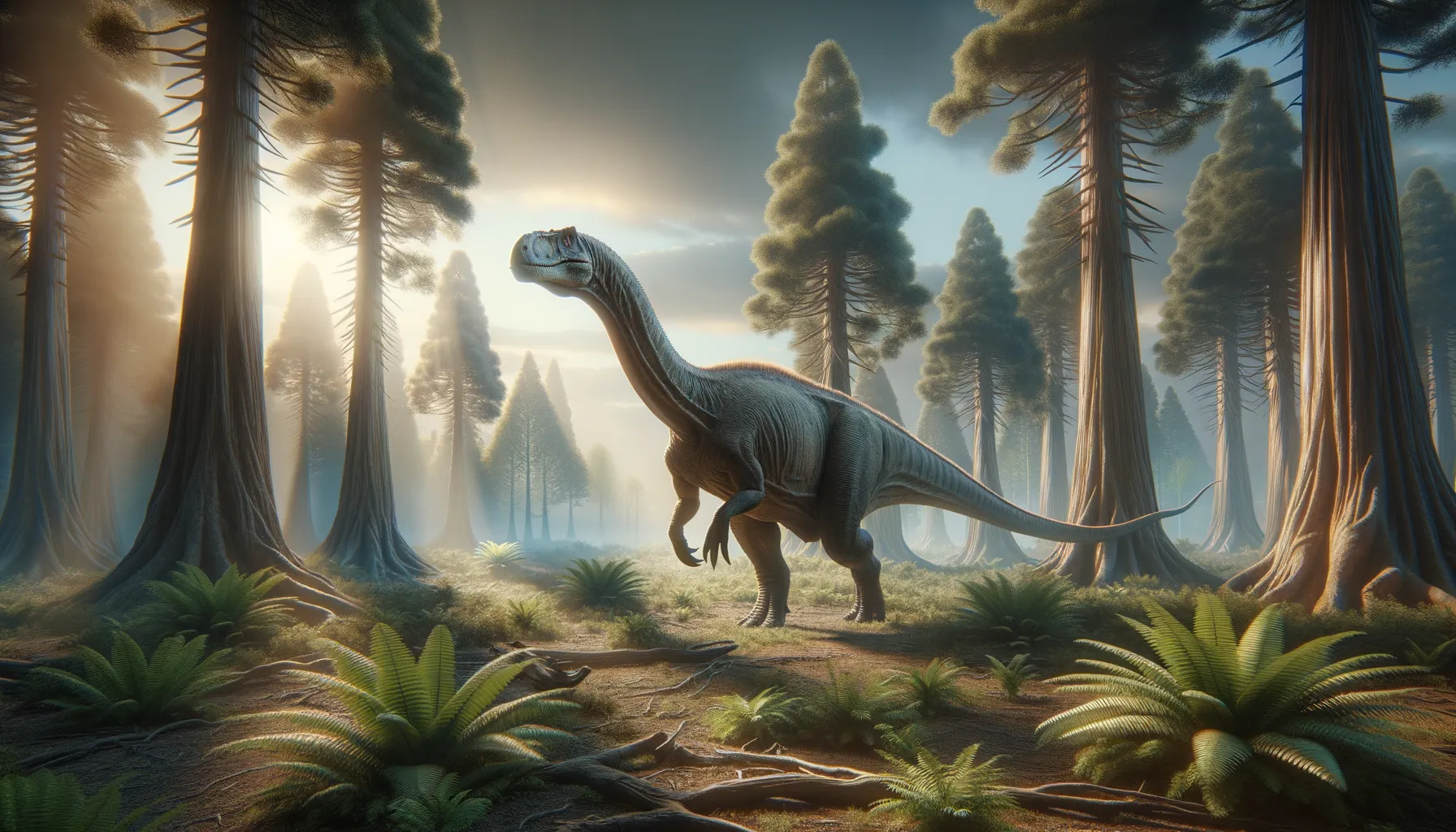
Euskelosaurus
Giant of the Triassic plains!
Period
Triassic
Length
Around 10 meters long.
Height
Approximately 3 meters at the shoulder.
Weight
Estimated around 1.2 to 2 tons.
Euskelosaurus was a large, early sauropodomorph dinosaur that lived during the late Triassic period. It was one of the first large herbivorous dinosaurs on the evolutionary path leading to the giant sauropods. Recognizable by its long neck and tail, its robust limbs suggest it walked on all fours, though it may have occasionally stood on its hind legs to reach high vegetation.
Diet
Euskelosaurus was herbivorous, feeding on a variety of plant material. Its long neck helped it access both low-growing plants and higher vegetation such as leaves from tree-like ferns.
Hunting
As a herbivore, Euskelosaurus didn't hunt for meat. Instead, it foraged for plants, using its height to reach food sources unavailable to smaller dinosaurs.
Environmental challenges
During the Triassic, the climate was generally warm and dry with few polar ice caps, which meant water sources could be scarce. Euskelosaurus needed to travel long distances in search of both food and water. Such environmental pressures may have contributed to its large size, as being larger could mean covering more ground and accessing varied heights of vegetation.
Speed
Likely slow due to large size.
Lifespan
Estimated at several decades.
First discovery
First discovered in South Africa in the late 19th century.
Fun Facts
- Euskelosaurus was a dinosaur that lived around 210 million years ago during the Late Triassic period.
- Its name, Euskelosaurus, means 'good leg lizard', referring to its strong limb bones.
- This dinosaur was a sauropodomorph, an early relative of the long-necked giants like Brachiosaurus and Diplodocus.
- Euskelosaurus was discovered in South Africa, making it one of the early dinosaurs known from this region.
- Unlike its larger sauropod cousins, it probably walked on both two legs and four legs, depending on its speed and activity.
- Euskelosaurus might have been a plant-eater, featuring traits common in herbivorous dinosaurs of its time.
- It reached lengths of about 10 meters, which was quite sizable for its era.
Growth and Development
Euskelosaurus likely had a prolonged growth period, gradually developing its massive size. This steady growth would have helped it avoid predation by outgrowing many potential threats over time. Being large also enabled greater mobility, aiding in finding food and water resources.
Habitat
Euskelosaurus lived in a varied environment comprising forested areas and open plains. Its habitat would have been lush with vegetation during favorable seasons, but it could become arid during dry spells. The landscape required adaptability to moving between locales for optimal food sources.
Interaction with other species
Euskelosaurus would have shared its environment with other early dinosaurs and various prehistoric creatures. Its size likely deterred smaller predatory species from attacking, and it coexisted with other herbivorous dinosaurs, likely forming loose herding groups for protection.
Natural lifespan
It likely lived upwards of 50 years in the wild.
Reproduction
Euskelosaurus was oviparous, laying eggs in nests in communal nesting grounds. The hatchlings were small and grew rapidly, possibly forming small groups with others for protection. Parental care is unknown but may have been limited after laying the eggs.
Social behaviour
This dinosaur may have exhibited some social behaviors, forming mixed-age herds or groups to enhance survival. Such groupings provided safety in numbers, especially during migrations across the landscape in search of resources.
Fossil locations
Fossils of Euskelosaurus have been primarily found in South Africa's Elliot Formation. The remains provide insights into the diverse environments of the late Triassic period. Further discoveries in nearby regions continue to expand our understanding of its range.
